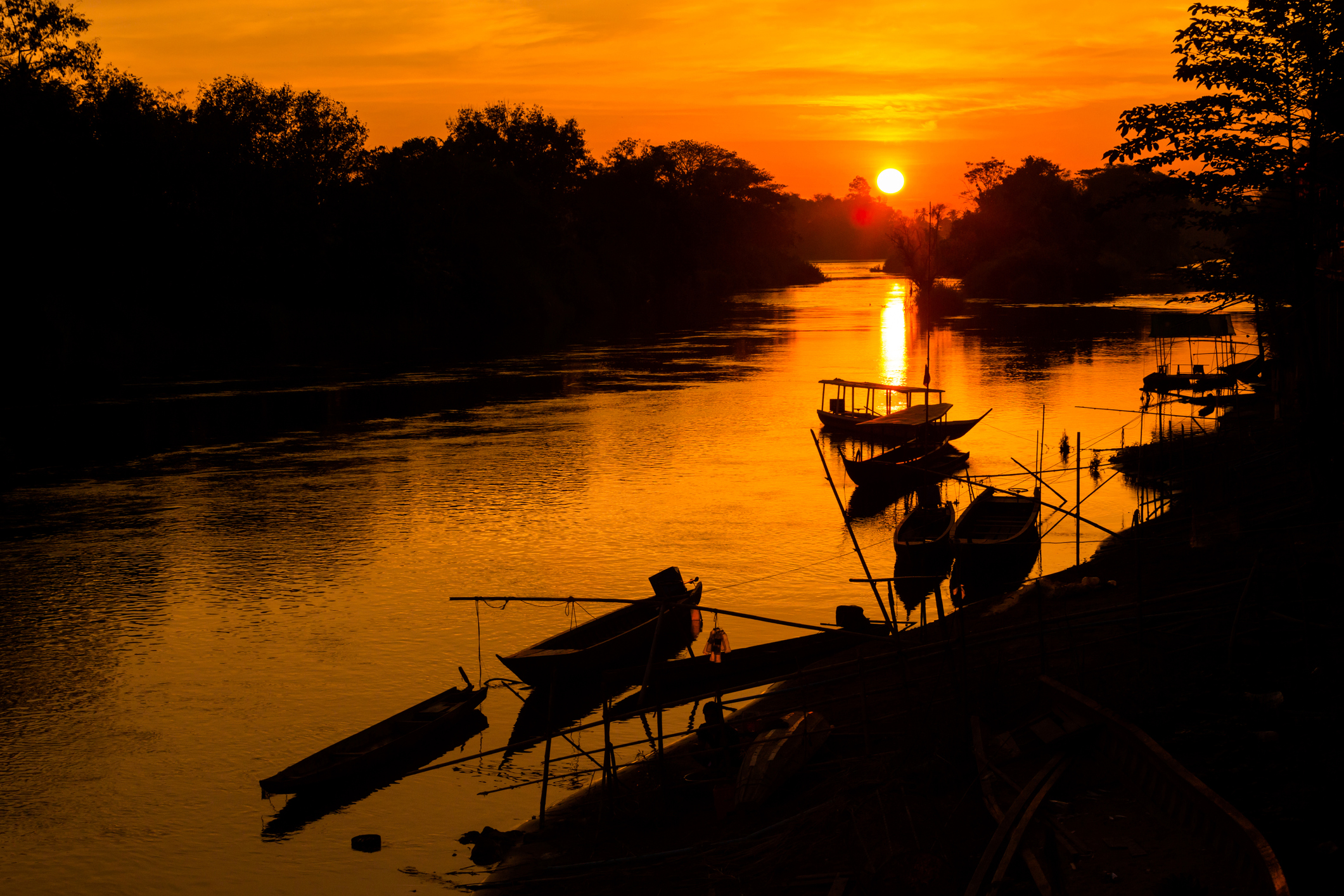
Champasak
You’d never guess it now, but Champasak was once the seat of an independent royal kingdom that thrived for over 200 years. Today, this tiny, sleepy, riverside town is best-known as the gateway to the lush and laid-back 4,000 Islands.
Champasak is both the name of a province and a town in southern Laos. Life moves at a very slow pace here (even by Lao standards), revolving around rice harvests, coffee breaks, and the ebb and flow of the Mekong. Today, the town consists of just a few roads stretching along the riverfront, which serves as little more than a jumping-off point for a small number of tranquil riverside resorts, but at one point this was the seat of the Kingdom of Champasak, an independent Lao state that thrived from 1713 to 1904. It’s hard to imagine now, as you wander between the rusty tin roofs and brightly-painted wooden houses, but seek out the colonial-era royal residences that still line the main street and you just might catch a whisper of its former glory.
We’d be happy to stop in Champasak for no other reason than its faded, tropical charm and lovely riverside location – but that’s not all this little pocket of rural Laos has to offer. Most visitors come here on their way to the UNESCO-listed ruins of Wat Phou, a temple dating back to the heyday of the Khmer Empire. It's also an excellent base to make a day trip to idyllic Don Daeng Island, or to visit one of our favourite places in Laos: the Bolaven Plateau. Though it’s best-known for its coffee plantations, the Bolaven Plateau also has some of the most spectacular waterfalls in Southeast Asia – and taking a white-knuckle, open-topped Jeep ride through its remote interior is exhilarating to say the least!



